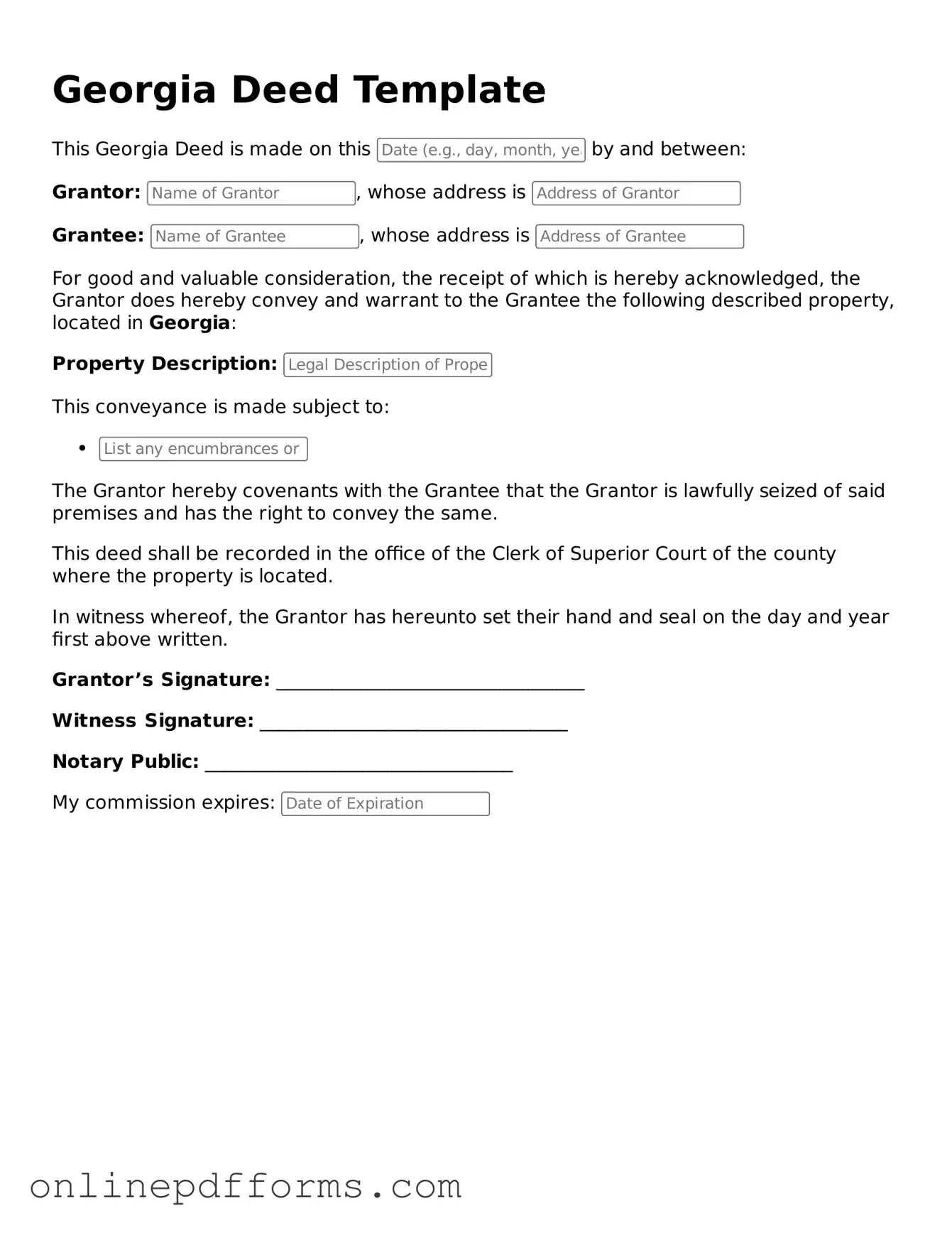The Georgia Warranty Deed is similar to the Georgia Deed form in that both documents transfer ownership of real estate. A Warranty Deed, however, provides a guarantee that the seller holds clear title to the property and has the right to sell it. This means that if any issues arise regarding the title, the seller is responsible for resolving them. In contrast, the Georgia Deed form may not always include such guarantees, making it essential to understand the differences when transferring property.
The Quitclaim Deed is another document that shares similarities with the Georgia Deed form. Like the Georgia Deed, a Quitclaim Deed transfers ownership of property. However, it does not provide any warranties about the title. This means that if there are any claims or liens against the property, the new owner takes on those risks. Quitclaim Deeds are often used between family members or in divorce settlements, where trust between parties is higher.
The Special Warranty Deed also resembles the Georgia Deed form. Both documents are used to convey real estate, but the Special Warranty Deed only guarantees that the seller has not caused any title issues during their ownership. This means that while the seller provides some level of assurance, it does not cover any problems that may have existed before they acquired the property. This limited protection can be an important consideration for buyers.
The Bargain and Sale Deed is another type of deed that is similar to the Georgia Deed form. It transfers property without any warranties about the title. This means that while the seller is conveying their interest in the property, the buyer assumes the risk of any title defects. Bargain and Sale Deeds are often used in foreclosure sales or tax sales, where the seller may not have complete knowledge of the property's history.
The Grant Deed is also comparable to the Georgia Deed form. Both documents serve to transfer ownership of real estate, but a Grant Deed includes some assurances about the title. Specifically, it guarantees that the seller has not transferred the property to anyone else and that the property is free from undisclosed encumbrances. This added layer of protection can be beneficial for buyers, offering more confidence in their purchase.
The Trustee's Deed is another document that shares characteristics with the Georgia Deed form. It is used when a property is transferred by a trustee, often in the context of a trust or bankruptcy. While it serves the same purpose of transferring ownership, the Trustee's Deed may not provide the same level of warranty as other deeds. Buyers should be aware of this distinction when considering properties transferred through a trust.
The Deed of Trust is somewhat different but still related to the Georgia Deed form. It is used to secure a loan on real estate, involving three parties: the borrower, the lender, and a trustee. The property is transferred to the trustee until the loan is paid off. While this document does not transfer ownership in the same way as a Georgia Deed, it is an important part of the real estate transaction process and can affect ownership rights.
The Leasehold Deed, while primarily used for leasing property, shares some similarities with the Georgia Deed form. It conveys the right to use and occupy a property for a specified period. However, unlike a deed that transfers ownership, a Leasehold Deed only grants temporary rights. Understanding the differences between these documents is crucial for anyone involved in real estate transactions.
Lastly, the Affidavit of Title is not a deed but relates closely to the Georgia Deed form. This document is often used in conjunction with a deed to affirm the seller's ownership and the absence of any liens or claims against the property. While it doesn't transfer ownership itself, it provides essential information that can protect the buyer during the transaction process.
